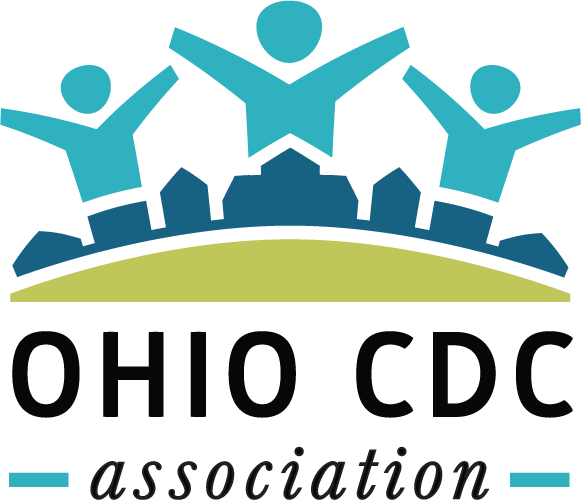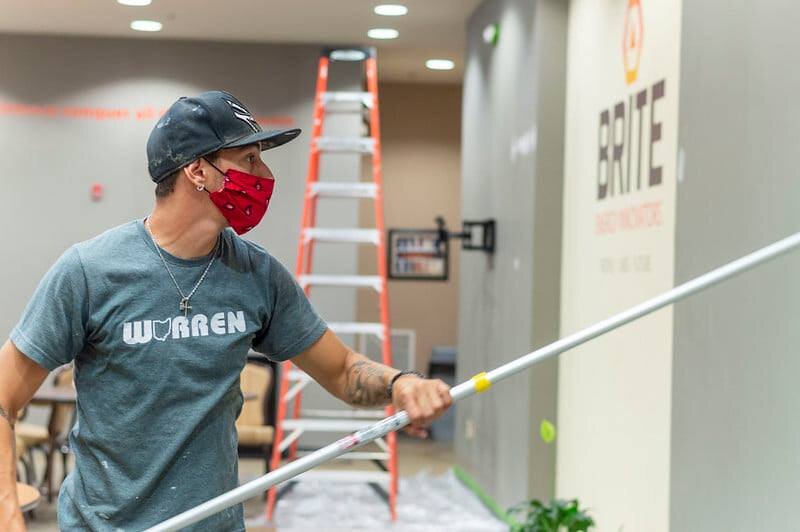On this page: Get Involved | Main Street Job Recovery Program | Community Reinvestment Act | Neighborhood Homes Investment Act | Rebuilding Ohio | State | Federal | Policy Links
Public Policy and Advocacy
Ohio CDC Association (OCDCA) advocates on behalf of CDCs and their communities to create public policy and a regulatory environment that will assist CDCs to be successful in their mission of revitalizing and strengthening communities.
What’s New
December 16, 2022
December 1, 2021
OHFA Releases 2022 AHFA and Additional Application Forms
OHFA has posted the 2022 Affordable Housing Funding Application for the 2022 Competitive Housing Tax Credit Round. Additionally, the Development Team Pre-Approval Form, The Design and Construction Features Form, and the Exception Request form have been posted. The last day to request a pre-application meeting with OHFA is December 1st. Please email QAP@ohiohome.org if you would like to schedule one.
November 30, 2021
Urge Senators Portman & Brown to Support the Build Back Better Act
The Senate is now considering the Build Back Better Act. Changes to the bill’s provisions are expected. Senate leadership is trying to pass the Build Back Better Act by Christmas Recess.
Take Action Today! Contact Senators Portman and Brown and mobilize your networks to get this landmark legislation passed:
Voice your support for the Build Back Better bill, noting the importance of preserving $150 billion in housing and community development investments.
Urge people in your professional and personal networks to call their Senators to support the Build Back Better bill.
November 8, 2021
Where Ohio’s larger cities stand with local ARPA
The Ohio Capital Journal has summarized where many of Ohio’s larger cities stand on investing their local American Rescue Plan Act (ARPA) funding.
November 4, 2021
Neighborhood Homes Investment Act included in House Build Back Better Package
The Neighborhood Homes Credit (aka Neighborhood Homes Investment Act) is included in the House version of the Build Back Better Act. The bill would establish the Neighborhood Homes Credit (NHC) to promote new construction or substantial rehabilitation of affordable, owner‐occupied housing located in distressed neighborhoods. The NHC would allow project sponsors to claim a credit to cover the difference between the costs to rehabilitate a home in a distressed neighborhood, or build a new home on an empty lot, and the price for which the home is sold. As with the Housing Credit, the program would be overseen by the Treasury Department and Internal Revenue Service, which would allocate credit authority to each state. Each state would be required to designate a single agency to award the credits, and each agency would be expected to develop a Qualified Allocation Plan for their NHC program. Each state’s NHC allocation would be equal to its state population times $3 (roughly $35 million for Ohio), with a small-state minimum of $4 million, except for in 2025 when the cap would be $6 times the state population ($70 million for Ohio) or $8 million. In years 2023 to 2025, those amounts would be adjusted upward for inflation. The program would sunset after 2025.
Thank you to all the members that signed on in support to Senator Sherrod Brown. We’ll be in touch for additional advocacy.
November 4, 2021
Homeowner’s Assistance Fund
Homeowners with gross annual incomes less than 150% of the household area median income who experienced a financial hardship due to a material reduction in income or material increase in living expenses associated with the coronavirus pandemic after January 21, 2020, MAY be eligible to apply for the Homeowners Assistance Fund through the Ohio Housing Finance Agency.
November 3, 2021
Housing Would Get $150B in Biden’s Revised Spending Framework
From NACEDA: President Biden announced a tentative agreement with Congressional leaders on his Build Back Better agenda. The agreement includes over $150 billion in affordable housing and community development investments over ten years. While the announcement represents a historic investment in housing and communities, NACEDA is deeply disappointed that the plan left out the CHDO set aside in the HOME Program. Read more.
October 28, 2021
OHFA Posts QAP and Draft Multifamily Underwriting Guidelines
OHFA has posted the draft of the 2022 Multifamily Underwriting Guidelines and the draft of the 2022 Design & Architectural Standards. The drafts incorporate feedback received on the 2021 guidelines. The drafts will be posted for comment until November 24th. Comments must be sent to QAP@ohiohome.org.
OHFA has posted the 2022-2023 Qualified Allocation Plan (QAP). The QAP was approved by OHFA's Board on September 15th.
October 11, 2021
New Loan Programs to Help Minority- and Women-Owned Businesses
The new Women's Business Enterprise Loan Program and Ohio Micro-Enterprise Loan Program were both priority initiatives of the DeWine-Husted Administration included in the 2022-2023 operating budget, which was passed in June by the Ohio General Assembly. Read more.
Women’s Business Enterprise Loan Program: These loans will be offered at or below market rate and currently are up to 3%. The minimum loan amount is $45,000 up to a maximum of $500,000. Loans will be repaid within 10 years for equipment and machinery and 15 years for owner-occupied real estate. Businesses must be 51% ownership and control by women or be certified as a Women-owned Business Enterprise (WBE).
Ohio Micro-Enterprise Loan Program: These loans will have a 0% interest rate. The minimum loan is $10,000 up to a maximum of $45,000. Loans will be repaid within five years for permanent working capital and seven years for equipment. Businesses must be certified as a Minority Business Enterprise (MBE) or a Women-owned Business Enterprise (WBE).
October 11, 2021
Pandemic Grant Programs Still Available to Businesses
Many small businesses affected by the COVID-19 pandemic still have access to four grant programs initiated by the DeWine-Husted Administration. The Ohio Department of Development is administering the grants. Read more.
September 29, 2021
Build Back Better Act in Flux
The Build Back Better Act is a transformational plan to invest in America’s people and communities that includes affordable housing and community development ($300 Billion+), permanently extending the child tax credit, establishing universal pre-K, federally paid family and medical leave, climate change mitigation and renewable energy, among other initiatives. This would be paid for by tax increases on large corporations and the wealthy (2017 witnessed substantial tax reductions). The Build Back Better Act is unfortunately referred to by the oft-cited (without context) amount of $3.5 Trillion in spending. It’s important to note that political attacks and media coverage rarely cite the important nuances of corresponding revenue raised and that the amount is over a whole decade and only represents 1.2% of the American economy over this time period. Read more.
September 29, 2021
Revised Financial Literacy Bill Clears House Panel
A measure that would require Ohio high school students to receive financial literacy instruction advanced in the House on Tuesday after it saw a raft of changes. Read more.
September 9, 2021
OCC Issues NPR to Rescind 2020 CRA Rulemaking
On September 8, the Office of the Comptroller of the Currency (OCC) issued an official notice of proposed rulemaking (NPR) to rescind its June 2020 Community Reinvestment Act (CRA) rulemaking and replace it with rules largely based on the 1995 CRA rules, as revised. Read more.
September 1, 2021
Biden-Harris Administration Announces Immediate Steps to Increase Affordable Housing Supply
Today, the Biden Administration announced several administrative strategies that can be implemented without Congressional approval to increase the nation’s affordable housing supply. The goal of today’s announcement is “to create, preserve, and sell to homeowners and non-profits nearly 100,000 additional affordable homes for homeowners and renters over the next three years, with an emphasis on the lower and middle segments of the market.” View the White House fact sheet on this supplement to the Build Back Better Agenda. Read more.
















